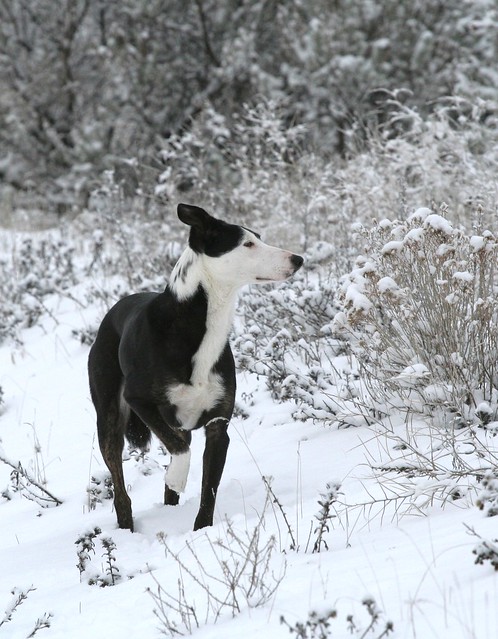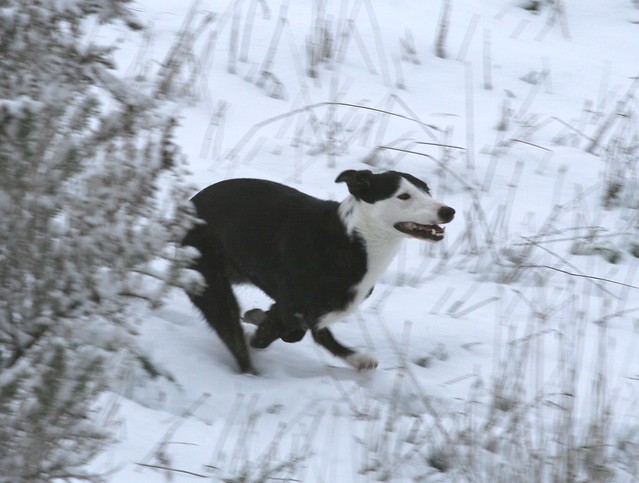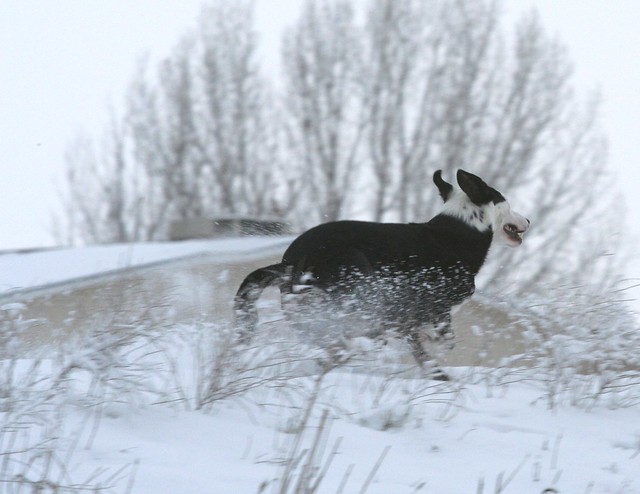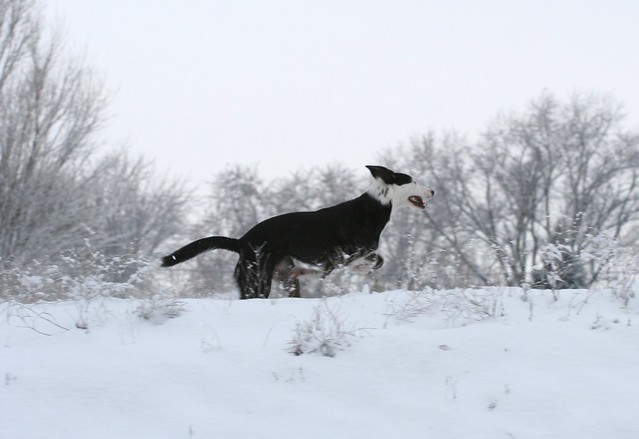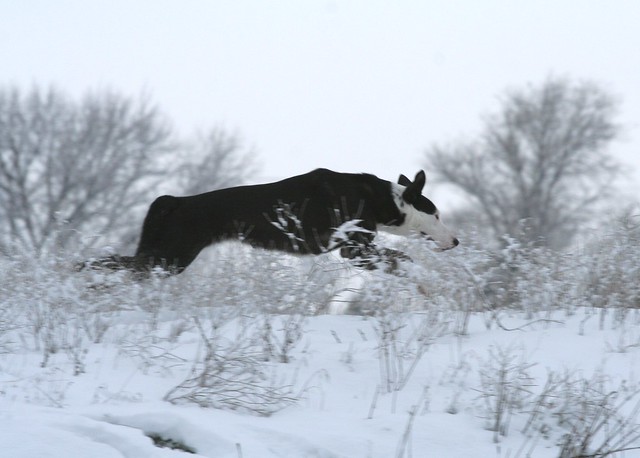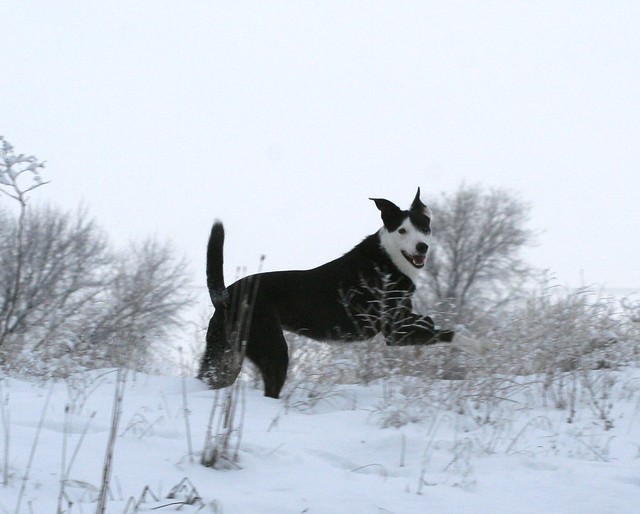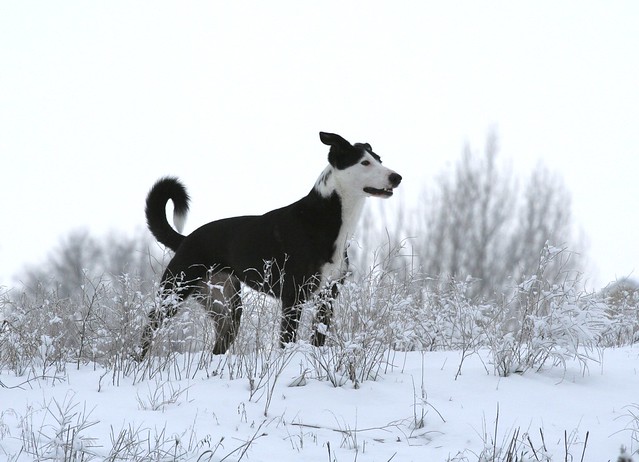When I was little, my dad came home with two female kittens he'd picked up from a neighbor's barn litter. I got to name them and, being two years old at the time, named one "Deedah" and the other "Neenah". They would be just about the only ones of our many, many cats for the next few years who would ever get names.
This would've been around 1986. Back then it never even occurred to my parents to allow cats in the house, let alone to take them to the veterinarian. The dogs got their yearly rabies shot and got to sleep in the the kitchen during a thunder storm, but even that was pushing it. Neenah and Deedah were never spayed, of course. By the time I was six or seven, we'd lost count of the exact number of their descendants cats we were feeding every night. It had to be at least thirty. We went through a lot of cat food, but it was the cheapest you could buy so we didn't mind.
It was common activity for me to dress up in long sleeves and heaving ski gloves and try to catch the kittens that always seemed to be in perpetual supply. Sometimes I'd catch one that didn't immediately try to rip my face off and I'd be delighted and would sneak it inside for a few hours to play. Later I realized these were probably the kittens that were so wormy and diseased they were too lethargic to fight.
If a cat got hit by a car, or got too sick from whatever disease was running through the population that week, dad would wait until my sister and I were distracted inside by a cartoon or something and then he'd shoot them with his .22 revolver and bury them next to the creek if they'd had a name or drop them in the trash if they didn't.
We didn't, you see, put much value on a cat. And most of our friends and neighbors in my small, rural town felt the same way.
Then, one day, my fourth grade class had a visit from a nice lady from a place called the "humane society". She brought in a dog that we got to pet, and handed out brochures for us to bring home to our parents, and told us about such strange things as "spaying" and "vaccinations" and "adopting pets". She didn't scold, she just... educated. I loved animals (what kid doesn't, really?). I couldn't have articulated it at the time, but I loved being shown a better way to care for them. I wanted to do the right thing for the creatures under my stewardship.
Coincidentally, this eye-opening lesson occurred about the same time that, through a combination of coyotes, horned owls, disease, and old age, we suddenly found ourselves with no more cats to feed. It took about a year of begging and wrangling, but my sister and I finally convinced dad to let us get some more cats. This time from the humane society.
When we adopted our kittens, we got even more pamphlets and brochures. We not only payed money to get the kittens (unheard of!), we spent more money to get them neutered and vaccinated. Suddenly, these animals had value. We worried about them getting sick, or running off, or getting eaten by a coyote. After more begging, they were allowed indoors whenever they wanted. They slept in our beds at night. They got a monthly flea treatment. And canned food. They had carefully-chosen names, and a file at the veterinarian with their picture on it. We started to take photos of them. (Seriously, I can count on one hand the number of photographs of Neenah and Deedah. Of Trouble and Henry, there are dozens).
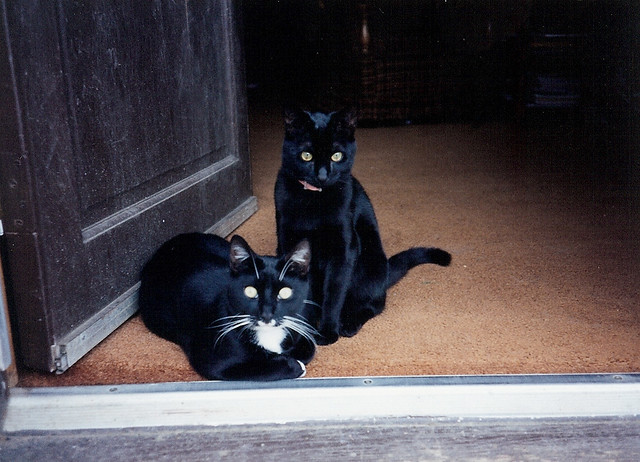
They were valued members of the family. There were no more barn cats, and visiting strays became rare. Just a few years prior we'd had what could have been classified as a feral cat colony. A Problem with a capital P. Although we never seemed to have a shortage of songbirds, lizards, frogs, snakes or any of the other wildlife that feral cats are supposed to decimate, but that's just the layman's observation of a kid. (Albeit one who spent a lot of time around the property chasing and sometimes catching these critters). And it was directly a result of putting so little value on our pet cats. It wasn't because we didn't like them, it was plain old-fashioned ignorance.
I think I've made it clear that I'm a fan of the
No-Kill movement. Some people dislike that it promotes
Trap-Neuter-Release (TNR) of feral cats. There are various arguments against TNR, some of them valid. I don't think it will work in all areas, but few people who promote TNR actually think that anyway. I think it would have worked well on my family's little colony, had we known about it back then. Some of the kittens could have made fine pets with a little socializing, the rest could have continued living their lives after being sterilized and died of natural causes (which is what they did anyway). Was it the best life a cat could have had? Heck no. Do I think they'd have preferred to live it than be dead? Yes. Did they kill wildlife? Yes. Did they decimate local wildlife populations? No.
TNR isn't perfect, but unfortunately, for most areas, it's the best we have. I think there are a few things that anti-TNR people still don't get:
1) No one (except maybe a few crazy cat people) want there to be any feral cats. Really. We all agree: ultimate goal for everyone = zero feral cats. But we have some now, so we have to deal with them. There aren't that many choices: it's pretty much TNR or death.
Which leads me to misconception 2) killing them isn't going to solve the feral cat problem. Period. Sorry, it just won't. Sure, it might work in some places in the short term (and based on the comments from frustrated bird-lovers, killing them is also satisfying in schadenfreude-like way), but long-term we are only going to stop producing feral cats if we as a society put more value on the cat in general (feral or not).
The
anti-TNR stance has a common thread: there is an attitude that killing cats is "down to earth" and "realistic" versus the "rainbows and butterflies" of the crazy, fluffy-headed cat people who support TNR. Bullshit. You want to talk "realistic"? I forced my way through my husband's textbooks when he was getting his business degree. You don't get more "realistic" (or dry) than
freaking economics. After all, it's become pretty clear by now that healthy, adoptable shelter animals in general are being killed because of no more than a
marketing problem. Cats are no different. And if your ultimate goal is to increase customer perceived market value, it seems pretty stupid to publicly devalue your commodity to the point that you're trying to get taxpayers to pay to destroy it.
Realistic means you don't take the sort-term, momentarily satisfying action. It means taking the less-satisfying, more frustrating and difficult long view. That, to one degree or another, is going to involve a whole lot of TNR.
